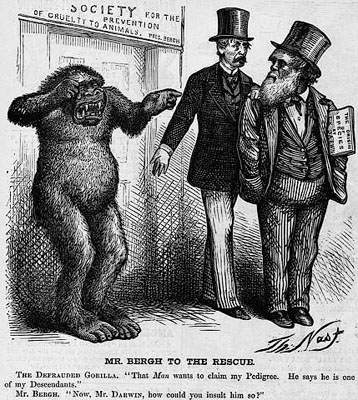Do newspapers exist to inform or to entertain?
Since
the 19th Century there has been a division between
newspapers which have been regarded as writing in a more
sensationalist manner and apt to entertaining their audience,
compared with those which aim to deliver accurate news in a less
simplified format. The term “tabloid” is used to describe the
former, a smaller newspaper delivering entertaining and
sensationalist stories and aiming to be popular with the masses – a
term that was coined in the 19th Century reflecting a
newspaper which is “concentrated, easily assimilable”.1
These newspapers in more recent years have been focused on
entertaining their reader, but the modern day division between
tabloids and broadsheets is more ambiguous in historical newspaper
archives. Here, we will briefly look at two examples of similar - but rather different - news pieces from the 1800s.
One of the key examples of this ambiguity in the purpose of newspaper articles can be found when looking at travel writing articles. An article from the 19th Century Washington DC newspaper Daily National Intelligencer titled “Curiosities from Africa”2 discusses Paul Du Chaillu's findings from Africa and his experiences with encountering gorillas on his travels; a fairly recently discovered animal. The article is ambiguous in its purpose, describing gorillas as “novelty” to introduce to Americans but also considering scientific aspects such as the racial classification of the gorilla as a “Troglodyte”. The article goes into descriptive detail and some aspects of intent to entertain are clear, describing how the gorilla could “probably tear flesh as easily as a tiger” and arguing that a gorilla could “probably whip (three famous fighters) all together”. On the surface this style of writing seems clearly purposed to entertain, and almost infantile, yet it is important to realize that this article was printed in the dominant newspaper of Washington DC along with many other regional newspapers.

Comparatively, a different article titled “The New Man Monkey” from the London Morning Post3 adopts a far more scientific approach when discussing the newly discovered gorilla; mentioning an exhibition of skeletons and how primate bone structure differs, and embodying the curiosity of the time of how the gorilla “bears the nearest resemblance to man”. While both these newspaper articles are both approaching the mid 19th Century fascination with the discovery of the gorilla, and exist to entertain the curiosity in many readers at the time, they approach the topic from different directions. The National Intelligencer article seeks to be more entertaining and light hearted with its writing, whereas the Morning Post places emphasis on the importance the recent discoveries may have in the scientific realm; yet both newspapers are daily newspapers from capital cities aimed at the mass population, and both manage to be entertaining to read while still providing some semblance of “news” and fact sharing with the reader.
What can be inferred from this comparison is that different newspapers, even in an article on a similar topic, can take different writing styles; but still both clearly exist to entertain the reader, as clearly neither is intended to be a scientific journal but rather to pique the interests of and entertain the average reader.
It
is also true that newspapers, particularly broadsheets, do offer the
reader news that does not exist to entertain but simply to inform. An
example from another daily American 19th
Century newspaper (Milwaukee Sentinel) features
a page which announces the construction of an additional train line
at Wisconsin Central Railway and its destinations, and underneath a local bookshop advertisement is featured.4
There is no ambiguity about intent here (simply to inform), yet the
same newspaper likely featured articles like those mentioned above
which existed to entertain. The Milwaukee Sentinel still
operates today as a broadsheet newspaper, and once again the same
blend of entertainment and purely informative “news” likely
exists as in many modern day newspapers.
Overall, newspapers offer both entertainment and information to their readers, and sometimes a mix of both. Whether it is the “main purpose” to entertain is a difficult question to answer, due to the variety of writing styles between different newspapers and the divide between tabloid and broadsheet. As seen in the gorilla articles above, a similar topic can be reported on in different ways and varying levels of “entertainment” as intent, and this is true in the modern day too. The delivery of an article and the style of the newspaper is what defines the newspapers intent, but it can also be argued that to “entertain” is not a solid term; a descriptive narrative on gorilla hunting can entertain (albeit in a different way) just as a sensationalist story in a tabloid on a terrorist attack could today. Entertainment, therefore, is what allows newspapers to maintain their readership base and appeal to potentially new readers.
~
Bibliography
Source 1: Oxford Dictionaries, retrieved from http://www.oxforddictionaries.com/definition/english/tabloid
Source 2: “Curiosities from Africa” Daily National Intelligencer 12th November 1859 (newspaper, Washington DC)
Source 3: “The New Man Monkey” Morning Post 5th February 1859 (newspaper, London, UK)
Source 4: “Multiple News Items.” Milwaukee Sentinel 1st January 1883 (newspaper, Milwaukee, Wisconsin)
1 Oxford Dictionaries, retrieved from http://www.oxforddictionaries.com/definition/english/tabloid
2“Curiosities from Africa” Daily National Intelligencer 12th November 1859
3“The New Man Monkey” Morning Post 5th February 1859
4“Multiple News Items.” Milwaukee Sentinel 1st January 1883
